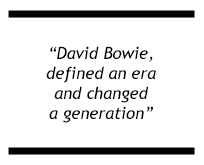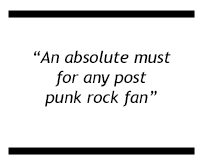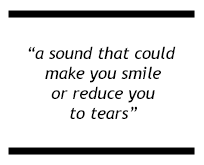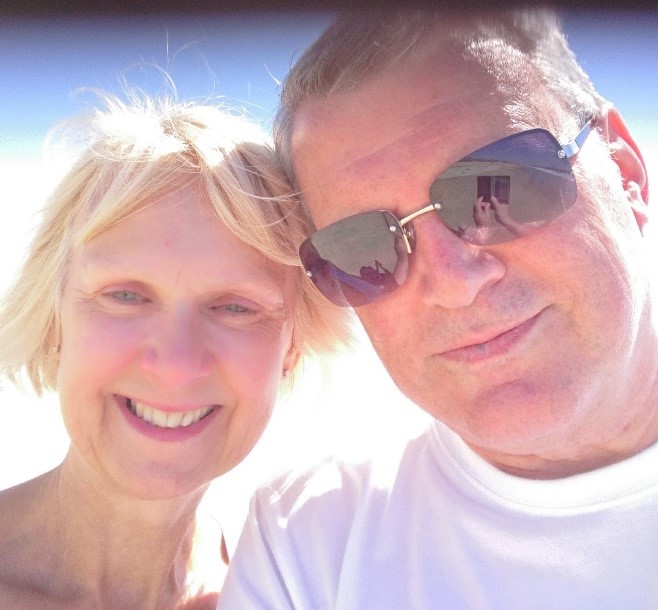Elvis Presley - GI Blues
I GOT THE HUP 2,3,4 OCCUPATION GI BLUES………. One positive of a 14-year age gap between my older brother and me was when he married and moved in with his new Mrs, he left me a red and white Dansette record player and exactly 17 albums. 15 were a mixture of Elvis Presley, Rolling Stones, The Beatles and a couple of others I’ll refer to later. I’m an avid follower of Eight Albums and it amazes me that no one I can recall has included an album by ‘The King’ in their selection. After all its back with Elvis that the whole world of Rock ‘n’ Roll began. In truth I could have picked any of Elvis’s albums Jailhouse Rock, Blue Hawaii, Elvis is Back. They were all there but as a 7-year-old kid, GI Blues just struck a chord, hell he even made singing in German sound cool (Wooden Heart). I’d played GI Blues so often that to this day I can still pretty much recite the words to most of the songs. What a talent and idol Elvis was in his youth, a fabulous voice and a real handsome devil. When you see his face from that era c.1960 on the cover of his albums it’s difficult to imagine the bloated, drug ravelled, burger scoffing disaster area that he’d become at his death in 1977. At his autopsy it was rumoured that doctors found his ravaged body contained 4 stone of compacted jobbies, if you’ve read this far, you’re probably thinking what a load of shite…….and you’d be right!

David Bowie - Ziggy Stardust and the Spiders from Mars
I’M AN ALLIGATOR!………..the first three words of Moonage Daydream and around 1972 the first 3 words I’d respond with when my exasperated Mother tried in vain to get my 13-year-old self to do something, anything, dishes, homework you name it. It usually occurred after 10 minutes of ignoring any request, I’d leap into action often within close proximity and 9 times out of 10 ended by a firm clout around the ear. Abbey View Youth Club in Dunfermline was my teenage haunt and Ziggy Stardust was played non-stop there for months spawning loads of lookalikes with orange feathered mullets and eye make-up, really quite brave in seventies Fife, where the fashion of the day had previously been steel toe capped boots and a donkey jacket. It was also the first ever album I’d bought in cassette form which allegedly enhanced the Dolby sound quality but on reflection stole the 30 minutes of cool when you walked home from the music shop with a new album under your arm with the cover sleeve carefully positioned in full view so everyone could see you had the latest and greatest. Ziggy Stardust was a coming of age for millions of kids growing up at this time. We were only 3 years after the Americans put a man on the moon and anything space or future world related always held some sort of appeal but Ziggy Stardust stood out due to Bowies charisma. It was pop art and space age theatre mixing great stories with incredible imagery, even today the popularity of posters and images of Ziggy Stardust or Aladdin Sane amazes me. David Bowie defined an era and changed a generation.
In the early seventies Top of the Pops was the teenagers must see programme of the time, it was one of only two media outlets where you could actually see the bands of the time perform. Thursday nights TOTP would be Friday mornings excited conversations at school. In my recollection the programme had two true wow moments, one was in 1982 when Boy George first appeared on our screens and the other was in July 1972, the night David Bowie burst on to our screens with his arm around Mick Ronson singing ‘Starman’. Bowie had taken glam-rock to a new level, he’d got into the psyche of virtually every teenager alive at the time and shown them how to be different, playing with gender roles, wearing make-up and dying hair. He set the scene for massive change in outlook and perception. Someone wrote at the time that ‘some artists don’t just change music, they change culture’ and that was certainly true of David Bowie with Ziggy Stardust and the Spiders from Mars. I still play this album at least once a month and nearly 50 years on there’s no sign of it ever dating.
Roxy Music - Roxy Music
In my very early teens, Tuesday night late was a difficult one for me, it was when the ‘Old Grey Whistle Test’ with Bob Harris was on TV and in the eyes of my parents too late for me to be up watching Rock bands. But OGWT was your opportunity to see the best new and touring bands playing live sets. My mum and dad were pretty strict in some ways so my opportunity to see the programme was limited. However, when I learned that Roxy Music, the band everyone at school was talking about were due to make an appearance, I had to see it. Sneaking downstairs, switching on the telly, waiting on it warming up (true), turning down the volume so not to wake my old man as he had a six o’clock start. Bob Harris had described Roxy Music as all style and no substance in the New Musical Express but he had to eat his words after this set as they burst into Ladytron. Chris MacKay on Sax and Oboe, Phil Manzenera on lead guitar, Brian Eno on the controls of a nuclear power station (certainly that was what it looked like) and Brian Ferry on sneering vocals and key boards, the most amazing sound emanated from the TV. On the following Saturday I bought the album ‘Roxy Music’ a brilliant mix of Brian Eno’s electronic sound overlayed on the superlative musicianship of the other band members. It still holds up today and Ladytron remains my favourite ever Roxy track, you can find the Whistle Test appearance on YouTube. Up until Brian Ferry decided he wanted to be a lounge lizard and after the next album ‘For your Pleasure’ when Brian Eno decided he was going to make a different type of noise away from the band, Roxy Music were for me the most inventive group of the era (c.72-74) and their album covers were always an added attraction.
Bob Marley and the Wailers - Catch a Fire
My old man was a Cockney, joined the Navy at the outbreak of war in 1939 and was duly posted to Rosyth in Scotland where he met my Mum. Once married he settled in Dunfermline but coming from a large family this meant I had lots of Aunts and Uncles as well as my Grandparents in the Big Smoke resulting in us spending Easter and Summer holidays in North Kensington, West London. In the sixties and seventies this area was where a large majority of the West Indian community settled and it was here in 1973, I met a Jamaican lad called Basil McGregor who lived in the same block of flats as my gran. He’d sit on the steps of the block with a battery-operated record player, smoking a joint and listening to Greyhound, Jimmy Ruffin, Toots and the Maytells and of course Bob Marley and the Wailers. He was curious of my accent and wanted to know about where I came from. I’d never consciously listened to Reggae but I was soon to get a lesson in its origins and roots. We’d chat about football, music and stuff and he’d just keep loading on endless Reggae records. He gave me the Bob Marley album ‘Catch a Fire’ which I played for months when I got home. Through tracks like Concrete Jungle, Slave Driver still relevant today and the beautiful harmonies of Stir it Up I was hooked.
The last time I saw Basil was in 1977 when I was in London on a Scotland v England Wembley trip. He was cycling no hands down my grans street in a postman’s uniform smoking a joint the length of a baby’s arm, on seeing me he shouted: “Hey Scotch boy,” and then chanted “Scotland, Scotland” which reverberated around the council blocks as he cycled off down the street. Top man, top album.
The Skids - Scared to Dance
It’s late in the evening, 24th of October 1977, and I’m walking home the 2 miles from Dunfermline town centre to my parents’ home on the Abbey View council estate in my home town of Dunfermline. My head is buzzing, my ears are ringing, I’m pretty much as deaf as a post. I’ve just spent 3 hours in my local music mecca, the Kinema Ballroom. In the company of 1500 like-minded devotees, I’d just watched The Clash the greatest rock band of all time. It was a great evening they’d been supported by Richard Hell and the Voidoids (later became Televison) and our local punk ensemble the Skids.
I’d been hearing about the Skids from everyone I knew and was aware of lead singer Richard Jobson and guitarist Stuart Adamson, they were much the same age as me and went to the neighbouring catholic school but I’d never had the opportunity to see them live. In the early days they were carried along by the punk wave there was nothing pristine about their output but they had the balls to be up there on stage and they came from our hometown and therefore they were ours and everyone in Dunfermline were rightly proud and hugely defensive of them. In 1979 when Jimmy Saville said on Top of the Pops that ‘Masquerade’ was the worst record he’d ever heard he was bombarded with abusive letters and even death threats (if only) with most of them carrying a Fife post mark. They were our Skids (I know, I’m sorry) and there was no way anyone was going to rubbish them.
I first saw them in 1977 but we had to wait nearly two years for their debut album ‘Scared to Dance’. It featured the early sounds of the ‘bagpipe’ guitar created by the late Stuart Adamson who would have so much success with his next band ‘Big Country’. Scared to Dance is a rousing album featuring war themes, Adamson provided the music and lead singer Richard Jobson the words, with the two most recognisable songs being ‘Into the Valley’ which charted in 1979 and to which the world famous Dunfermline Athletic still run out to at home games and the ‘Saints are Coming’ which was covered in the States by both U2 and Green Day, U2 having a no.1 hit with the track.
40 years later the Skids reformed with Bruce Watson of Big Country fame and his son Jamie replacing the sadly departed Stuart Adamson in the line-up. In 2019 my eldest daughter took me to see them at the ‘Gorilla’ in Manchester, I’d no idea they had such a big following in North West put down to their many appearances on Granada TV in the seventies. They were outstanding, better than ever, much more polished, mixing brilliant anthems with wicked stories. It will forever remain the oldest Mosh pit I’ve ever entered in my life as they say in Scotland ‘nae hair and grey hair’, there was callipers, wallipers and zimmer frames with Richard Jobson now in his late fifties fitter than ever belting out my favourite track ‘TV Stars’…….ALBERT TATLOCK!
The Clash - The Clash
An absolute must for any post punk rock fan. ‘The Clash album’ was a fast-moving heady mix of Punk, Reggae and New Wave featuring their top ten hit, I Fought the Law, high speed Moshers dream White Riot and Reggae classics Police & Thieves and White Man in Hammersmith Palais. White Riot was very controversial at the time described by some ill-informed journalists as racist when in fact it was a plea for young white people to find a cause to fight for rather than fighting with each other. All Clash albums are class but there was something about this one, it was new wave, it was of the time and most of all it had balls.
Seeing them headlining at the Kinema Ballroom, Dunfermline in 1977 supported by The Skids remains my greatest ever concert memory. They returned in July 1978 Three times that night they started White Riot. Three times they had to stop because the crowd were on stage.
(Click on the link below in the bio section, I’m in there somewhere.)

Hipsway - Hipsway
Hipsway were a million miles from the Clash and the Skids but in the summer of 1986, you couldn’t go to a pub or venue in Scotland without hearing at least one track from this album. They were formed in 1984 by former members of several Scottish bands of the time and were led by Graham Skinner whose deep vocals were instantly recognisable. Hipsway had a sound that was more soul than rock their head for fashion saw them in broad double-breasted jackets, rolled up Levi’s and combed back floppy hair. They nailed the look and the mood of the time and that year they enjoyed top twenty hits with The Honeythief, Ask the Lord, Broken Years and Long White Car and the album Hipsway went Gold (100k+ sales) helped by the brewer Scottish & Newcastle choosing the track Tinder as the theme for the launch of McEwan’s Lager, they were guaranteed 90 seconds of exposure every ad-break after 7.00pm for a whole year. They never gained the broader critical success they deserved which was a shame as they were world famous in Scotland! Not long after, the band split just before the release of their second album and didn’t reform until 30 years later in 2016. Hipsway the album really stands the test of time and sounds as fresh today as it did in ‘86’.

Otis Redding Sings Soul - Otis Blue
Two albums among the 17-piece record collection I inherited when my brother left home, initially held no appeal whatsoever. One was an album by Hank Snow (me neither) called Songs of Tragedy. It was clearly the type of country album where if you played it backwards your dog lived and your wife came back to you! It remains un-played to this day and resides somewhere in the loft at my Mum’s house. The other I never played until I was about 15 or 16 and only then because the name Otis Redding had caught my ear when I first heard Dock of the Bay on the radio. My musical tastes were beginning to broaden and I was starting to enjoy soul but generally the up-beat variety like the Four Tops and the Islay Brothers. This album just blew me away and gave me access to a deeper more meaningful bluesy sound that could make you smile or reduce you to tears. Was there ever a more soulful voice than Otis Redding? This album is a mixture of original Otis Redding numbers like Loving You for too Long and Respect that Aretha Franklin made famous with cover versions like the Rolling Stones hit Satisfaction or Sam Cooke’s A Change is Going to Come. If you ever get the chance, feast your lugholes.
Bio
David Currier is originally from Dunfermline, Fife but has lived the last 25 years in Appleton Thorn, Cheshire. Married with two grown up daughters he’s currently looking forward to full retirement.
https://youtu.be/VdW1Cn97XZY



